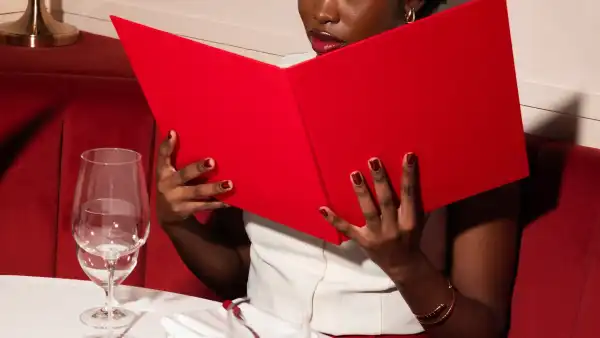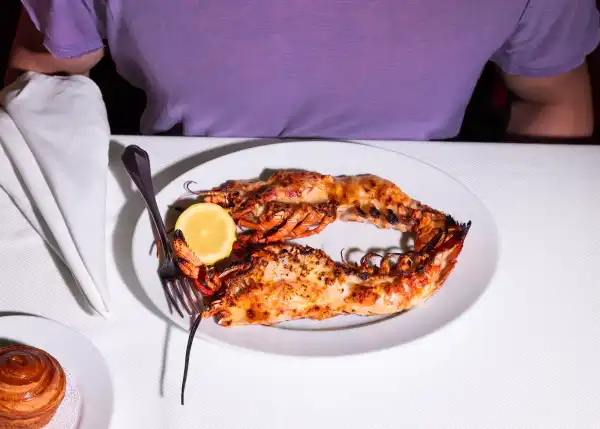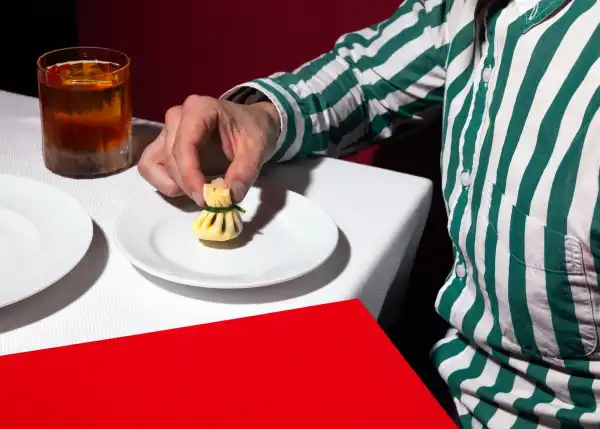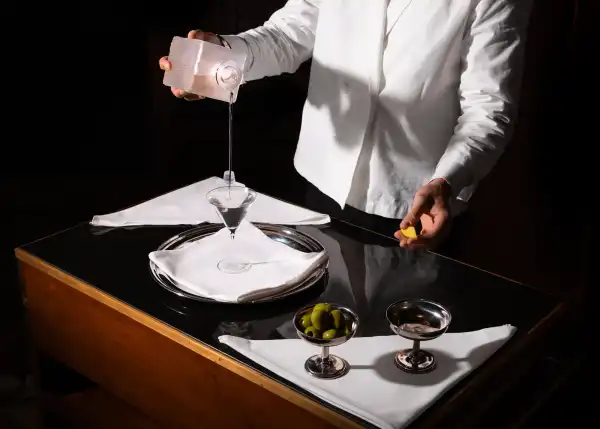
Save this storySave this storySave this storySave this storyYou’re perusing the Food Scene bulletin, Helen Rosner’s direction on what, where, and the manner of dining. Subscribe to get it delivered directly to your email.
Currently, it appears that one can’t simply toss away a cigarette butt in this metropolis without it striking a brand-spanking-new Gallic eatery boasting a retro perspective. A plethora of Le and La and L’, Chez Whomever and Maison Such-and-Such, This or That d’Or. Should you, in a fog of butter and white Burgundy, endeavor to pen a spoof of the archetypal restaurant amidst our ongoing culinary Franco-mayhem, you could hardly select a worse title than “Chateau Royale,” an expression both remarkably unoriginal and amusingly suggestive. It also serves as the moniker of an establishment that debuted this summer, within a century-old coach house just south of Washington Square Park, the latest venture from the restaurateur Cody Pruitt, of Libertine, and his associate, Jacob Cohen. The quasi-ludicrousness of the setup is prominently showcased: waiters in white coats? Goose liver? Snails? Oui, oui, and encore oui.
There’s limited innovation at Chateau Royale; nonetheless, to its advantage, that seems to be precisely the intention. Regarding the predictability of the offerings—and, indeed, the general ambiance—Chateau Royale embraces it directly, yet with a lighthearted approach. On the ground floor, there’s a lounge, darkly atmospheric and personal; on the upper level, within the more refined eating space, cream-hued walls and an arrangement of windows impart a more breezy, expansive sensation to the area. While the selections in each locale have some commonality—at either, you can savor succulent, chilled New Caledonian prawns presented atop frozen water, or an entire steamed artichoke accompanied by a bowl of zesty béarnaise sauce—they constitute entirely separate experiences. I favored my time above, where the atmosphere and the fare evoke an older, more upscale type of French restaurant compared to my recent experiences. The dishes encompass vintage staples such as lobster thermidor, the crustacean bisected lengthwise and swathed in a covering of bubbling baked cream and cheese, which gushes sumptuously from the carapace with minimal pressure from silverware, as well as a portion of sablefish, inherently the most delightful fish in the sea, served in a beurre blanc generously sprinkled with black pearls of roe. A certain paradoxical solace resides in this form of blatant indulgence: a richness of fat and salt that transcends thought or calorie awareness and penetrates directly into the primitive mind.

Lobster thermidor.
The barrage of intensity is effective, owing to the restaurant’s choices in serving sizes (modest) and pacing of service (unhurried), allowing the taste buds some respite between delighted exclamations. In this regard, Chateau Royale echoes Libertine, Pruitt’s other dining spot, a charming, cream-loving West Village bistro where I have often felt patrons should receive a complimentary dose of Lactaid alongside the bread and butter. Akin to Libertine, Chateau Royale presents virtually no deviations from the richness, even when ordering what seems lighter. A chicory salad, for instance, is coated in a magnificent anchovy dressing and further elevated by a scattering of grated Mimolette. The sauce accompanying the duck a l’orange, vibrant with bergamot and calamansi, is dense and shimmering. A scallop crudo is enveloped in luxury, courtesy of a sauce grenobloise, crafted from browned butter with capers, with a hint of miso, and the thickness of groundnuts.
There is one strikingly American intrusion into this French-inspired environment, a perhaps needless embellishment on a menu whose extravagances are generally subtler: the beggar’s purse, a single-bite appetizer featuring crème fraîche and osetra caviar contained within a pliable crêpe and fastened with a strip of chive. Though commonly, albeit spuriously, attributed to France, it’s quintessentially a New York creation: during the eighties and nineties, the beggar’s purse was the emblematic tidbit of the Quilted Giraffe, the era’s most talked-about dining establishment. (Coincidentally, Chateau Royale’s head chef, Brian Young, was a member of the culinary team at the Quilted Giraffe during that period.) Likely due to its flippant, class-conscious title, the beggar’s purse became a phenomenon, propelled, undeniably, by its exorbitant cost: upon its introduction in 1981, the Quilted Giraffe charged thirty dollars each; by the close of the decade, it had reached fifty dollars. Chateau Royale’s beggar’s purses retail for thirty-nine dollars per ping-pong-ball-sized bundle—based on your viewpoint, this is either outrageous or an exceptional bargain.

The caviar-filled canapé known as a beggar’s purse.
The incongruity of this morsel stems partly from the fact that, while Chateau Royale is by no means an inexpensive dining option, it also refrains from being showy or pretentious; it appears unsuitable as a venue for a dish so overtly mocking. In virtually all other aspects, Pruitt and his staff seem devoted to cultivating a hospitable, welcoming experience: service is notably amicable, with the waitstaff guiding patrons through the more erudite components of the offerings without a hint of condescension, and extending a warm welcome to avid Francophiles of varied gastronomic backgrounds. One evening, I dined near a family accompanied by two young children, who thoroughly enjoyed the oysters and the pommes frites, much to the pleasure of the entire eating area. A discordant element of a different sort is present on the menu below, in the lounge, where the setting remains enjoyable, and the beverages are exquisite, but where I discovered scant enjoyment among the more casual consumable items not available above. A “club sandwich,” as an instance, was prepared with lukewarm shredded duck (and was only a single layer—not a club sandwich whatsoever!). A hefty chien chaud (pun intended?) registered less as a playful reinterpretation of upscale-casual cuisine and more as a cynically overpriced wiener, albeit accompanied by a highly French kohlrabi choucroute.

A Martini served from an old-fashioned bar cart.
Helen, Help Me!
Send your inquiries regarding dining, consuming, and any food-related subject, and Helen might address them in a subsequent bulletin.
There’s no bar above, yet Chateau Royale’s answer to this structural matter is my preferred feature of a dinner there: a retro bar cart. A limited selection of mixed drinks—an olive-oil-infused dirty Martini, a citrus-perfumed Old Fashioned—are pre-mixed below, cooled to near-freezing in crystal containers, and then transported across the eating area on the cart, to be served alongside the table. This mobile bar travels across the room’s checkerboard ground with the rumbling growl of a subway system. One senses that the sound is deliberate: someone could easily intervene and repair the cart, securing a wheel or adding a touch of lubricant, yet its resonant rattle grants the device a sense of character, a touch of joyful, indifferent imperfection. Even if you forego the liquor, it’s worth concluding your meal with a dash of Champagne—ideally, poured from a silver pitcher across a garnet-colored orb of cassis sorbet, a delightfully altered kir royale. Ultimately, a hint of effervescence and lightness, a beam of sunrise at the end of a velvety night. ♦
Sourse: newyorker.com






